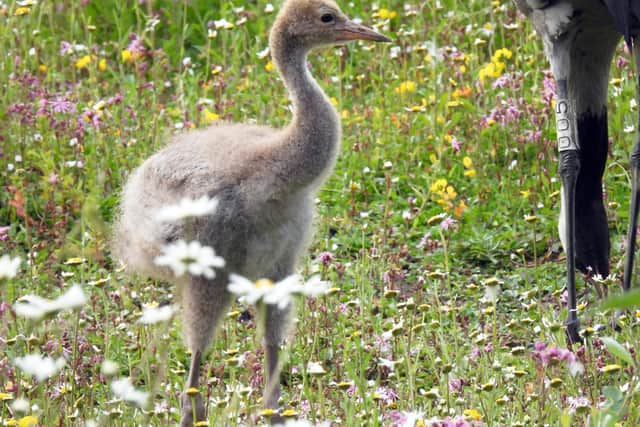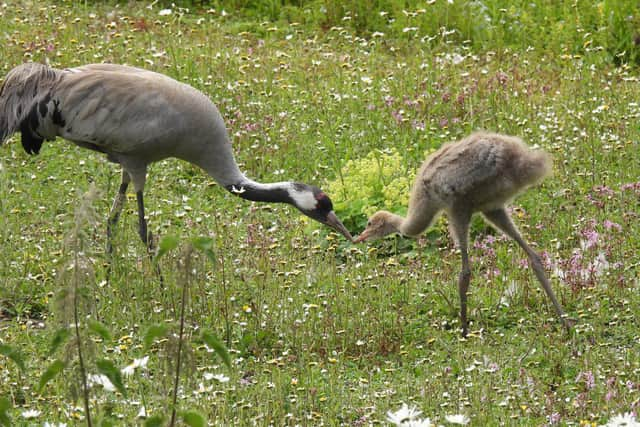Watch as Washington Wetland Centre celebrates arrival of new common crane chick after several years of unsuccessful breeding attempts
and live on Freeview channel 276
The new arrival, which hatched on May 9, has been welcome news for the 15 year old adult common crane’s, which have been at the centre since 2008.
The hatching of the chick came after years of unsuccessful breeding attempts for two common crane’s, who arrived in Washington from WWT’s headquarters in Slimbridge, Gloucestershire.
Advertisement
Hide AdAdvertisement
Hide Ad

After hatching, the common crane family were taken to an off show area for the first two weeks, allowing them time to bond in a safe environment.
Collection manager, Rhys McKie, said: “We’re thrilled at how well the chick is doing and how amazing the adults have adapted to life as parents.
“Since the chick hatched, we’ve been doing regular health checks to make sure it was growing at a healthy rate and was as strong as possible for going into a larger exhibit.
“Crane chicks can grow up to an inch and put on a pound of weight every single day in the early stages. The decision to put the family back out in their exhibit was the right one and at the right time, allowing the chick to explore its new environment, forage in the open and get that all important exercise.”
Advertisement
Hide AdAdvertisement
Hide Ad

Common cranes spend hours foraging, feasting on various invertebrates such as earthworms, caterpillars and beetles, as well as plant seeds, roots and shoots.
The young chick is already enjoying its surroundings at the Washington centre and has been treating visitors to many photograph opportunities.
Ryan added: “The crane chick is getting quite brave and the family are moving around the exhibit much more now. They do like the long grass towards the back of stream Channel for cover; every now and again their heads pop up out of the blue – it’s like Jurassic Park!”
Standing at an impressive 4ft, common crane’s at the UK’s tallest birds and were once widely seen but were lost as a breeding species around 400 years ago as a result of hunting for food and the subsequent draining of their wetland nesting sites.

